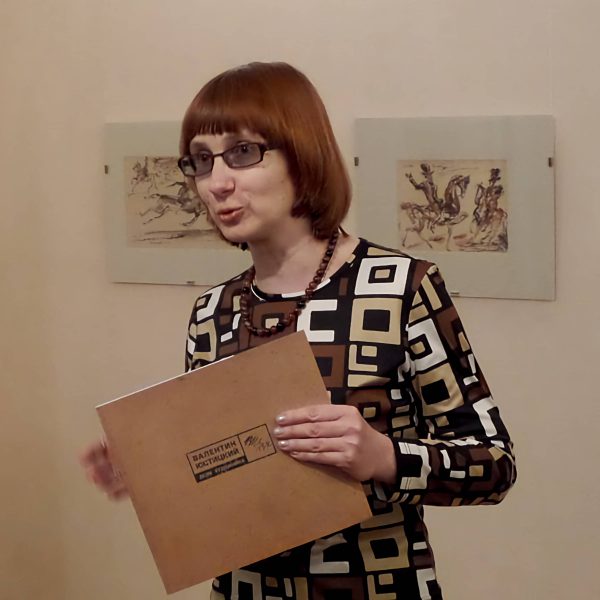On December 16, the Kuznetsov House-Museum in Saratov hosted the opening of the exhibition of graphics by Valentin Justitsky and presentation of the book “The Artist’s Case. Valentin Justitsky”. The exhibition was organized by the Seven Winds charitable art Foundation together with the staff of the Saratov Radishchev State Museum.
The author of the idea was the founder of the Seven Winds Foundation Nikolay Malygin, who presented the project to the audience. According to Malygin, the idea of the project that combines the organization of a exhibition and the publication of a book was born in early 2014.
“This year brought me together with wonderful people, the staff of the Radishchev Museum and the heritage of Valentin Justitsky,” Nikolai Malygin shared his memories with the guests at the opening of the exhibition. – So the idea was born to create a book dedicated to the tragic fate of the great Russian artist.
We have made a request to the State Archive of the Russian Federation about the personal file of Valentin Mikhailovich. To be honest, we didn’t really expect that they would answer us. But a few months later we received copies of the case documents. These documents formed the basis of our book.
We had interrogation protocols, ridiculous accusations in front of us… And on the other hand, touching letters from Gulag, written by the artist to his wife and daughters, which touch to the depths of the soul… In the outgoing year of horses, it is very symbolic that we finish this book and organize exhibition of Justitsky, who loved horses so much: many of his paintings are somehow connected with horses.”
Lyudmila Pashkova, the responsible editor of the book, Deputy General director of the museum, also drew the attention of the guests to the touching letters to her wife and daughter.
“The letters published on the pages of the book comes from different points of the Stalin’s Gulag to Saratov, to Gogolevskaya Street, to house No. 97, apartment 2,” – Lyudmila Pashkova clarified. — They were addressed to his wife and daughters. Subsequently, the youngest daughter Anna devoted her whole life to preserving and presenting her father’s creative heritage to the public. It is gratifying that the tragic biography of Valentin Justitsky was not forgotten, not covered with oblivion, but became the part and pride of the Russian art school.”
Marina Borovskaya, the head of the department of storage of museum objects of the Radishchev Museum, also worked on writing the text of the book. She said that the publication of the book is a huge responsibility both to the memory of the artist himself and to those people who have worked for many years before us and first of all to A. T. Simonova.












Justitsky began his work in an era of rapid development of artistic life in Russia. He was called a “freethinker from the Page Corps” (young Valentin graduated from the Page Corps in St. Petersburg, after which he entered the Goldblatt Art School). His creative search led Justitsky to Paris, where in 1913-1914 he took lessons at the Blanchard Private Academy.
Valentin Justitsky came to Saratov on the order of the People’s Commissar of Education Lunacharsky, as it was written at that time, “to create proletarian art.” In the early 1920s, the artist was the inspirer of “dynamic architecture”, organized a “noise orchestra, the POECHMA theater, decorated the streets of the city on holidays, painted scenery for performances, designed catalogues of Saratov exhibitions.
… And then came the fateful year 1937. The artist was arrested, exiled to the Gulag… he was forgotten. To be remembered and rediscovered many decades later.

